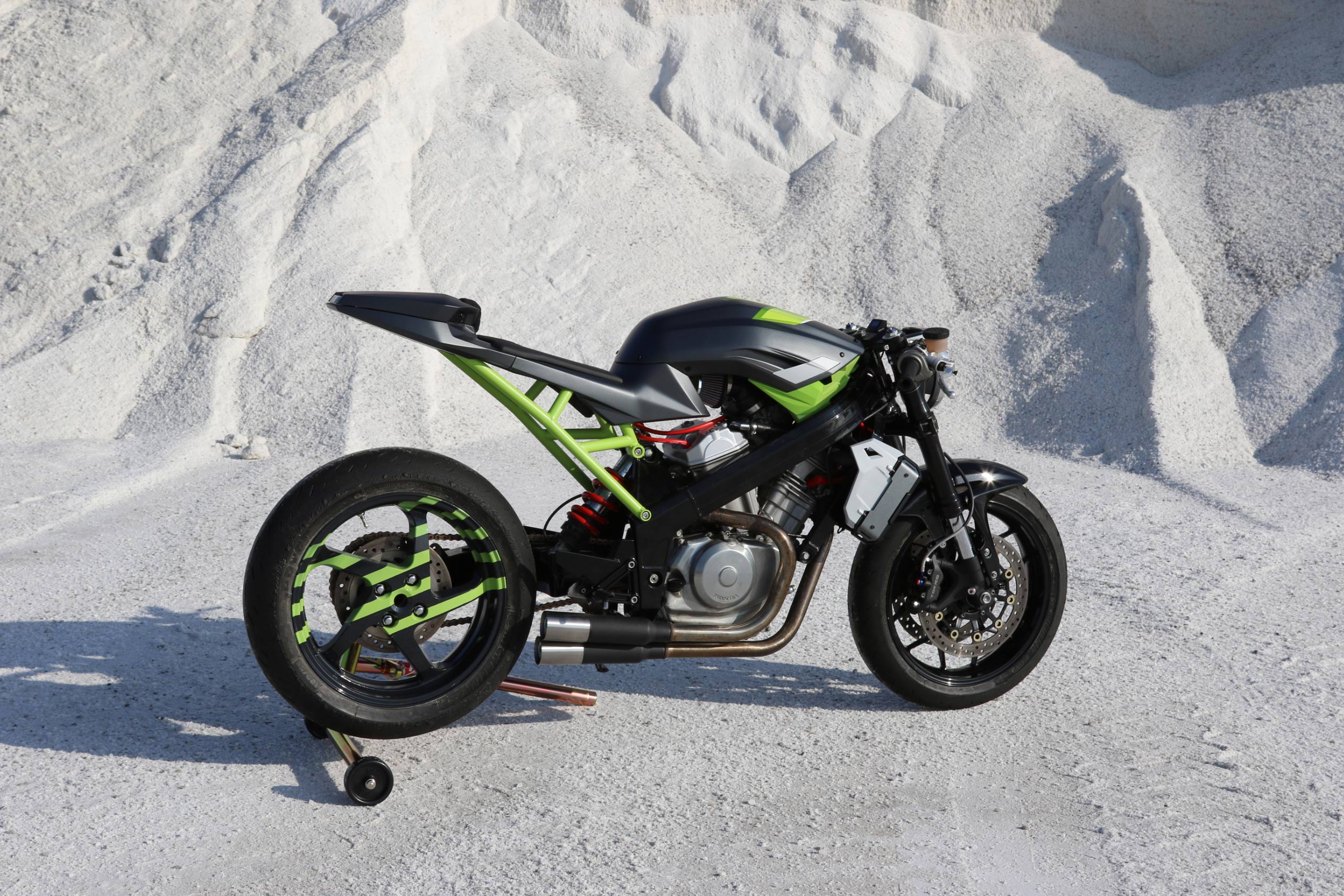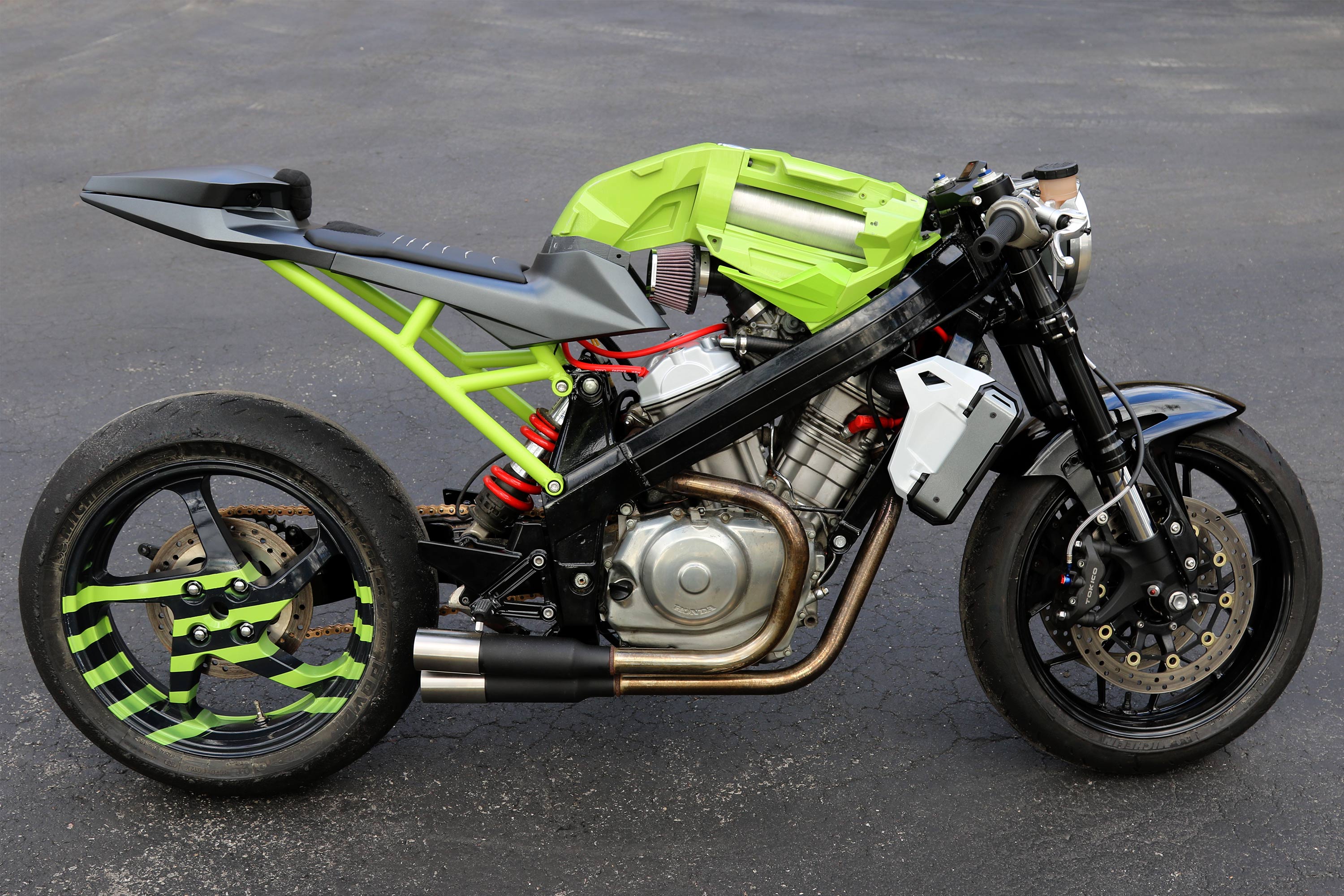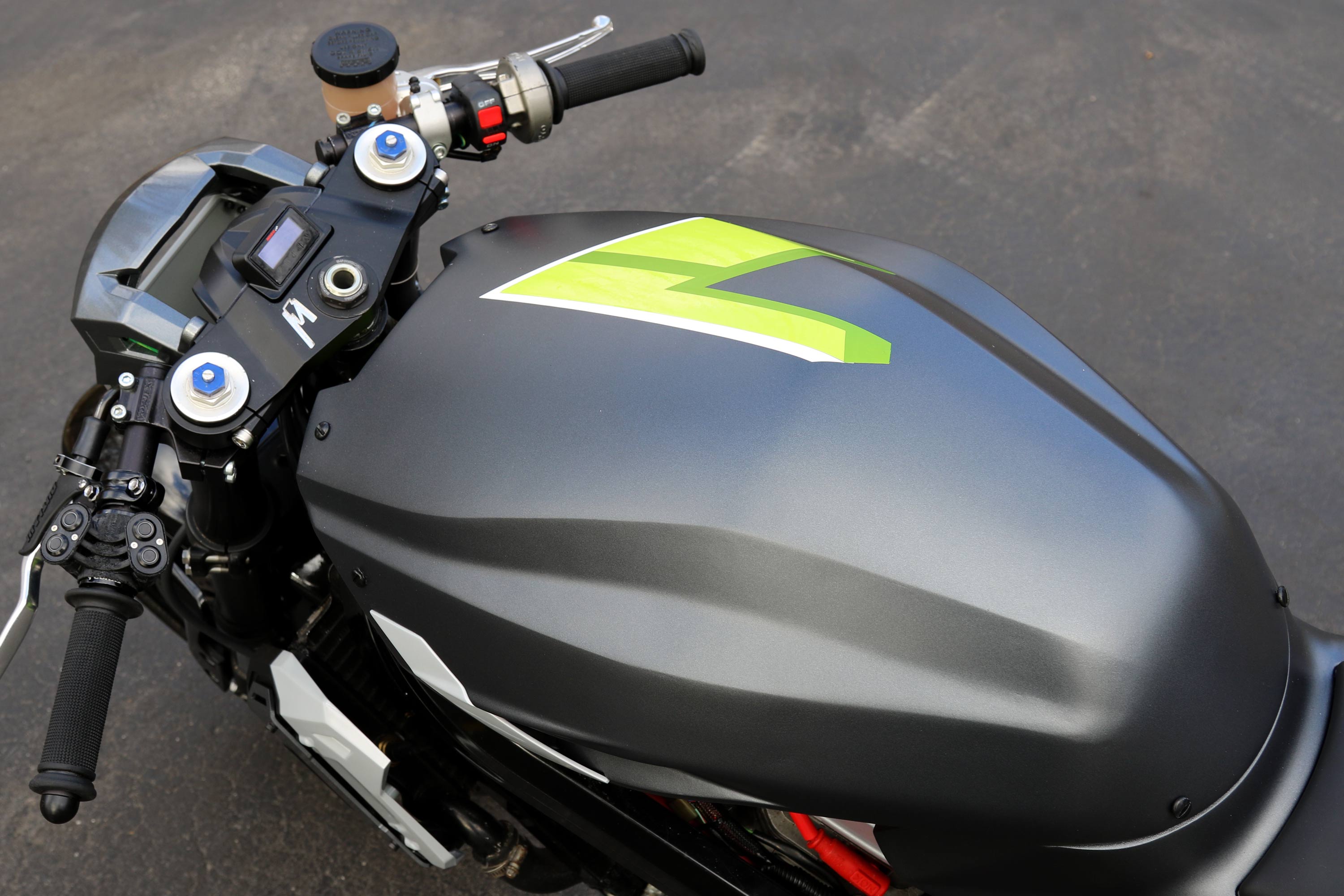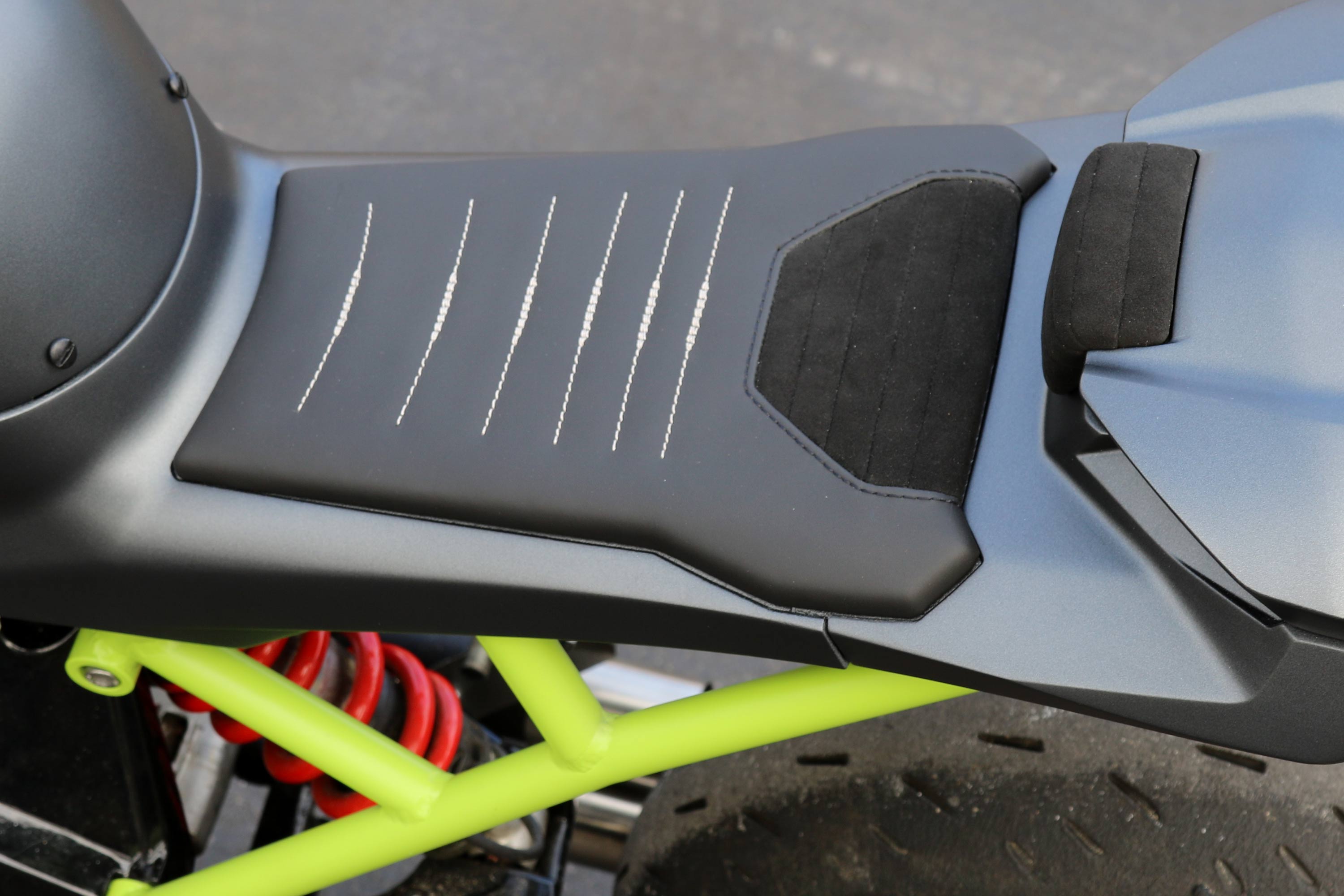
The basis of the design is an 1989 Honda Hawk GT. A bike that never achieved mainstream admiration, but has been revered as the predecessor to the Ducati Monster and the SV650. Known to many as a cult track bike because of its lightweight chassis, a great torque curve, and engineering features that were ahead of its time. The lightweight perimeter frame mated to an Elf-Racing Pro-Arm swingarm and interchangeability with modern sportbike components provided a great foundation for this project. Fast forward thirty plus years, the aesthetics have not aged as well as the engineering, but it provided a great opportunity for Ryan Hahn to reimagine and focus the design as a purpose built track bike.

The design process was a blend of traditional and modern design techniques. Hand sketching and rendering established the direction and emotion of the bike. The original defining characteristics of the ’89 Hawk were blended with a futuristic proportion and aesthetic. For the bike to be truly modern in appearance, the surfacing needed to be sophisticated. CAD systems are capable of executing whatever anyone can dream up. To truly execute a design with sensitivity of lines, form, light and shadows, and looks stunning from any angle, the design had to be proven out in clay. A full scale clay model was made using the existing chassis to not only establish the design but also prove out the ergonomics.

Modern sport bikes have a rider triangle that allows the rider to adapt their body position to the bike in different ways depending on the condition. At full speed, little tweaks in aerodynamics make all the difference. Adjusting the tail angle to be more of an incline allows the riders back to be more horizontal in a full tuck, and ultimately lowers the coefficient of drag.
Once a design was executed in clay, it was 3d scanned and a point cloud used as a guide to create the CAD. Core structural parts needed to be established and then designed for fabrication before the bodywork. The tail section tubes were CNC plasma cut before bending, fixturing, and welding. The necessary functional components like the battery, wire harness, and fuel cell were placed in space to optimize function and packaging. The point cloud scan set the stage for the CAD bodywork creation and refinement of the design. Multiple iterations were made in order to coordinate the fabrication and assembly of each part, for the ultimate goal of creating bodywork that is well crafted, functions properly, and looks stunning.

Production motorcycles have parts that are typically made out of injection molded plastic. Mass produced parts have to adhere to certain rules in order to be made efficiently which ultimately drive the look. This project used 3d printing for the bodywork fabrication, which allowed the bodywork to be more artistic and sculptural. There are large undercuts in the tail cover that beautifully unwrap as they flow rearward. The tank cover is one continuous part and is not broken up with parting lines. By using 3d printing, every part was given the freedom to be as beautiful as it could be.
The drawback to 3D printing is that a lot of time is required to build the part, and then even more time and skill is required to bring it to a high cosmetic level. The most aesthetic parts like the bodywork, had many hours of preparing before primer, base coat and the matte finish clear coat. A great color scheme and well thought out graphics can make or break a design. Digital rendering was used to evaluate different looks before executing in real life. Full scale graphics were created and digitally applied to the virtual surface of the bike before parts were even fabricated. The results are a “one of” bike that uses the latest in prototyping technology for accuracy and refinement, but doesn’t sacrifice the sensitivity and beauty of a traditional design process.